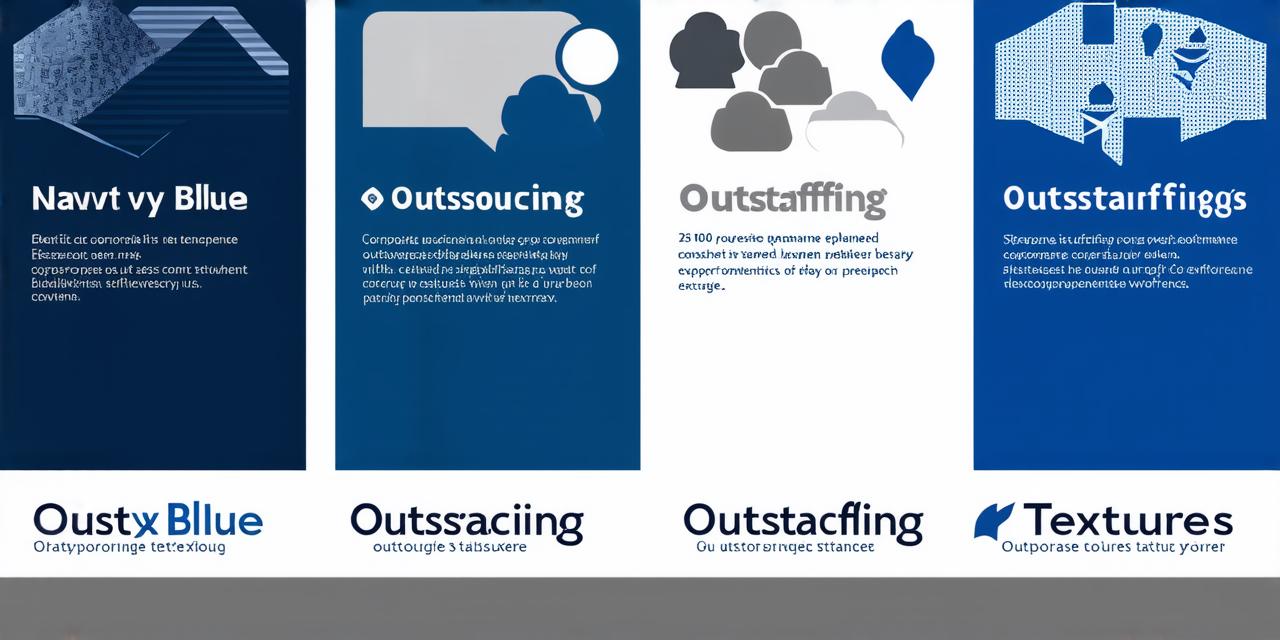Here’s the corrected HTML code for the article:
In today’s fast-paced business environment, companies often look for ways to reduce costs and increase efficiency. One common strategy is to outsource or outstaff certain tasks or projects. While these two terms may seem similar, there are important differences between them that can have a significant impact on a company’s success.
Pros of Outsourcing:
-
1. Cost Savings: One of the main advantages of outsourcing is the potential for significant cost savings. By hiring external labor, businesses can often find more affordable options than they would be able to secure in-house.
-
2. Expertise: Outsourcing also allows businesses to access specialized expertise that may not be available in-house. For example, a company that specializes in IT services can bring their knowledge and experience to bear on a project, potentially saving the business time and money.
-
3. Flexibility: Outsourcing can also provide greater flexibility for businesses, as they are able to scale up or down as needed, without having to make significant investments in equipment or infrastructure.
-
4. Risk Reduction: By outsourcing certain tasks, businesses can often reduce their exposure to risk and liability. For example, a company that is not skilled in international tax law may be more comfortable working with an external accounting firm that specializes in this area.
Cons of Outsourcing:
-
1. Lack of Control: One potential downside of outsourcing is the lack of control businesses have over the work being done. This can lead to quality issues, delays, and other problems that may be difficult to resolve.
-
2. Communication Challenges: Communication can also be a challenge when working with external partners. Without regular face-to-face interaction, misunderstandings and misinterpretations can occur, potentially leading to delays and other issues.
-
3. Cultural Differences: When working with partners in different countries or cultures, businesses may need to navigate cultural differences and adjust their communication styles accordingly. This can be a complex process that requires time and effort.
-
4. Security Risks: Finally, outsourcing can also pose security risks for businesses. If sensitive information is being shared with external partners, there is always the potential for breaches or other security issues.

Pros of Outstaffing:
-
1. Control: One of the main advantages of outstaffing is the high level of control businesses have over their operations. By hiring full-time employees, companies can ensure that work is being done to their exact specifications and standards.
-
2. Customization: Outstaffing also allows for a higher level of customization and specialization. When hiring employees exclusively dedicated to working for one business, companies can tailor their skills and experience to meet their specific needs.
-
3. Long-Term Planning: Outstaffing is often seen as a long-term strategy, as it allows businesses to plan for future growth and expansion. By hiring full-time employees, companies can ensure that they have the resources and expertise they need to scale up or down as needed.
-
4. Company Culture: Finally, outstaffing can also help to foster a strong company culture. When employees are dedicated exclusively to working for one business, they are more likely to feel a sense of ownership and commitment to the organization’s success.
Cons of Outstaffing:
-
1. Cost: One potential downside of outstaffing is the high cost of hiring full-time employees. This can be especially prohibitive for small or medium-sized businesses that may not have access to the same level of capital as larger organizations.
-
2. Commitment: Another potential downside of outstaffing is the long-term commitment required. When hiring full-time employees, businesses must be prepared to invest in their training and development, and make a long-term commitment to their employment.
-
3. Limited Flexibility: Outstaffing can also be less flexible than outsourcing.
